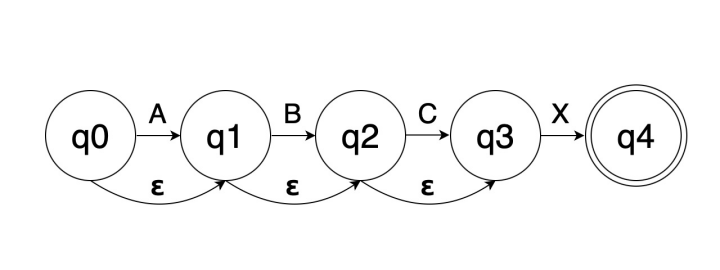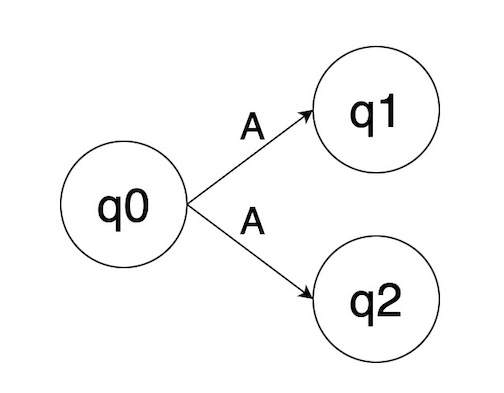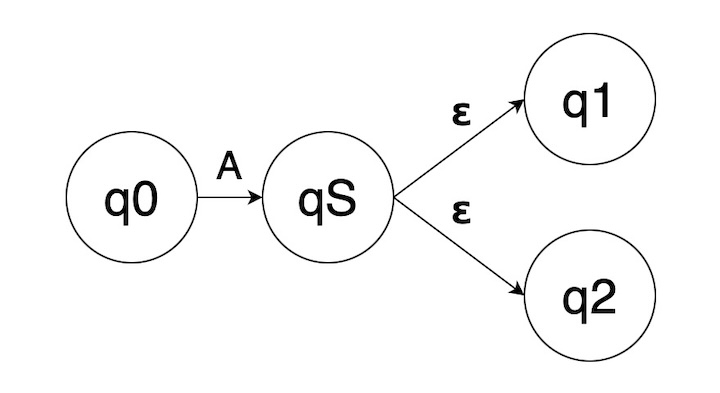2025-07-10 03:00:00
I just came back from Canada’s only rectangular province. I was there to help out my 95-year-old mother while her main caregiver took vacation. It’s an unhappiness that my family has splashed itself across Canada in such a way that we have to get on an airplane (or take drives measured in days) to see each other, but that’s where we are. I came back with pictures and stories.
Let me set the stage with a couple of photos. Everyone knows that Saskatchewan is flat and brown and empty, right?


Mom lives in Regina, the provincial capital, a city built round a huge park that contains the Legislature (the flowers are from its front lawn), a sizeable lake, and an artificial mini-mountain (the water and trees are from its tip). Have no fear, I’ll get to some no-kidding prairie landscapes.
The night I arrived, after my Mom went to bed she got up again, tripped on something and fell hard. Her right arm was swollen, bruised, and painful. The skin and adjacent blood vessels of very old people become thin and fragile; her whole forearm was a bruise. I tried to get her to go to Emergency but she wasn’t having any of it: “You wait for hours and then they give you a pain-killer, which is constipating.” Since she could twist her wrist and wiggle her fingers and give my hand a firm grasp, I didn’t push too hard.
A couple days later on Saturday she got her regular twice-a-week visit from the public HomeCare nurse, a friendly and highly competent Nigerian immigrant, to check her meds and general condition. She looked at Mom’s wrist and said “Get her an appointment with her doctor, they’ll probably want an X-Ray.”
I called up her doctor at opening time Monday. The guy who answered the phone said “Don’t have any appointments for a couple weeks but come on over, we’ll squeeze her in.” So we went in after morning coffee and waited less than an hour. The doctor looked at her arm for 45 seconds and said “I’m writing a prescription for an X-Ray” and there was a radiologist around the corner and she was in ten minutes later. The doctor called me back that afternoon and said “Your mother’s got a broken wrist, I got her an 8AM appointment tomorrow at Regina General’s Cast Clinic.”
The doctor at the clinic looked at her wrist for another 45 seconds and said “Yeah, put on a cast” so they did and we were home by ten. I’d pessimistically overpaid a couple bucks for hospital parking.
The reason I’m including this is because I notice that this space has plenty of American readers. Did you notice that the story entirely omits insurance companies and money (except parking)? In Canada your health-care comes with your taxes (granted, higher than Americans’) and while the system is far from perfect, it can fix up an old lady’s broken wrist pretty damn fucking quick without any bureaucratic bullshit. Also, Canada spends a huge amount less per head on health-care than the US does.
And Mom told me not to forget that Saskatchewan is the birthplace of Canadian single-payer universal healthcare. Tommy Douglas, the Social Democrat who made that happen, has been named The Greatest Canadian.
Oh, did I say “flat and brown and empty”? Wrong, wrong, and wrong. The Prairies, in Canada and the US too, have textures and colors and hills and valleys, it’s just that the slopes are gentle. There are really flat parts and they make farmers’ lives easier, but more or less every square inch that’s not a town or a park is farmed. I took Mom for a drive out in the country southeast of Regina, from whence these views:


Note that in both shots we’re looking up a gentle slope. In the second, there’s farm infrastructure on
the distant horizon.
Also consider the color of the sky.
In Canada that yellow-flowering crop is called “Canola”, which Wikipedia claims refers to a particular cultivar of Brassica napus, commonly known as rapeseed or just rape, so you can see why when Canada’s agribiz sector wanted to position its oil as the thing to use while cooking they went for the cultivar not the species name. I’m old enough to remember when farmers still said just “rapeseed”. Hmm, Wikipedia also claims that the OED claims this: The term “rape” derives from the Latin word for turnip, rāpa or rāpum, cognate with the Greek word ῥάφη, rhaphe.
Let’s stick with canola.
After I’d taken those two canola-field shots I pulled out my Pixel and took another, but I’m not gonna share it because the Pixel decided to turn the sky from what I thought was a complex and interesting hue into its opinion of “what a blue sky looks like” only this sky didn’t.
Maybe it’s just me, but I think Google’s camera app is becoming increasingly opinionated about color, and not in a good way. There are plenty of alternative camera apps, I should check them out.
In case it’s not obvious, I love photographing Saskatchewan and think it generally looks pretty great, especially when you look up. On the province’s license plates it says “Land of living skies”, and no kidding.



The first two are from the park behind Mom’s place,
the third from that mini-mountain mentioned
above.
My Mom’s doing well for a nonagenerian. She’s smart. When I visited early last fall and we talked about the US election I was bullish on Kamala Harris’s chances. She laughed at me and said “The Americans won’t elect a woman.” Well then.
But she’s forgetful in the short term. I took her to the Legislature’s garden and to the top of the mini-mountain and for a drive out in the country and another adventure we’ll get to; she enjoyed them all. But maybe she won’t remember them.
“Make memories” they say, but what if you show someone you love a good time and maybe they won’t remember it the next day? I’m gonna say it’s still worthwhile and has a lesson to teach about what matters. There endeth the lesson.
Indigenous people make up 17% of Regina’s population, the highest share in any significant Canadian city. By “indigenous” I mean the people that my ancestors stole the land from. It’s personal with me; Around 1900, my Dad’s family, Norwegian immigrants, took over some pretty great farmland southeast of Edmonton by virtue of “homesteading”, such a nice word isn’t it?
Regina tries to honor its indigenous heritage and my favorite expression of that is its Mackenzie Art Gallery, a lovely welcoming space in the T.C.Douglas building (for “T.C.” read “Tommy”. (Did I mention him?) Mom and I walked around it and had lunch in its very decent café.
Every time I’ve been there the big exhibitions in the big rooms have been indigenous-centered, and generally excellent. I try to go every time I visit and I’ve never been disappointed.

In 2025, anything I have to say about this piece would be superfluous.

I love modern-art galleries, especially with big rooms full of big pieces, even if I don’t like all the art. Because it feels good to be in the presence of the work of people who are pouring out what they have to offer, especially at large scale. If the task wasn’t hard enough that failures are common then it wouldn’t be worthwhile, would it?
They’re especially great when there’s someone I love there enjoying it with me. Here’s Mom.

These days, any visit might be the last. I hope this wasn’t.
2025-07-08 03:00:00
I haven’t shipped any new features for Quamina in many months, partly due to a flow of real-life distractions, but also I’m up against tough performance problems in implementing Regular Expressions at massive scale. I’m still looking for a breakthrough, but have learned things about building and executing finite automata that I think are worth sharing. This piece has to do with epsilons; anyone who has studied finite automata will know about them already, but I’ll offer background for those people to skip.
I’ve written about this before in
Epsilon Love. A commenter pointed out that the definition of “epsilon”
in that piece is not quite right per standard finite-automata theory, but it’s still a useful in that it describes how
epsilons support constructs like the shell-style “*”.
Finite automata come in two flavors: Deterministic (DFA) and Nondeterministic (NFA). DFAs move from state to state one input symbol at a time: it’s simple and easy to understand and to implement. NFAs have two distinguishing characteristics: First, when you’re in a state and an input symbol arrives, you can transfer to more than one other state. Second, a state can have “epsilon transitions” (let’s say “ε” for epsilon), which can happen any time at all while you’re in that state, input or no input.
NFAs are more complicated to traverse (will discuss below) but you need them if you want to
implement regular expressions with . and ? and * and so on. You can turn any NFA into a
DFA, and I’ll come back to that subject in a future piece.
For implementing NFAs, I’ve been using Thompson's construction, where “Thompson” is Ken Thompson, co-parent of Unix. This technique is also nicely described by Russ Cox in Regular Expression Matching Can Be Simple And Fast. You don’t need to learn it to understand this piece, but I’ll justify design choices by saying “per Thompson”.
I’m going to discuss two specific issues today, ε-closures and a simpler NFA definition.
To set the stage, consider this regexp: A?B?C?X
It should match “X” and “BX” and “ACX” and so on, but not “CAX” or “XX”.
Thompson says that you implement A? with a
transition to the next state on “A” and another ε-transition to that next state; because if you see an “A” you should transition,
but then you can transition anyhow even if you don’t.
The resulting NFA looks like this:

In finite-automaton
math, states are usually represented by the letter “q” followed by a number (usually italicized and subscripted, like
q0, but not here, sorry). Note q4’s double circle which means it’s
a goal state, i.e. if we get here we’ve matched the regexp.
I should add that this was produced with
draw.io, which seems to make this sort of thing easy.
So, here’s a challenge: Sketch out the traversal code in your head. Think about the input strings “AX” and “BCX” and just “X” and how you’d get through the NFA to the Q4 goal state.
The trick is what’s called the ε-closure. When you get to a state, before you look at the next input symbol, you have to set
up to process it. In this case, you need to be able to transition on an A or B or C. So what you do is pull together the
start state q0 and also any other states you can reach from there through ε-transitions. In this case, the ε-closure
for the start state is {q0, q1, q2, q3}.
Suppose, then, that you see a “B” input symbol. You apply it to all the states in the ε-closure. Only q1 matches,
transitioning you to
q2. Before you look at the next input symbol, you compute the ε-closure for q2, which turns
out to be {q2, q3}. With this ε-closure, you can match “C” or “X”. If you get a “C”, you”ll step to
q3, whose ε-closure is just itself, because “X” is the only path forward.
So your NFA-traversal algorithm for one step becomes something like:
Start with a list of states.
Compute the ε-closure of that list.
Read an input symbol.
For each state in the ε-closure, see if you can traverse to another state.
If so, add it to your output list of states.
When you’re done, your output list of states is the input to this algorithm for the next step.
Suppose your regular expression is (A+BC?)+. I’m not going to sketch out the NFA, but just looking at it tells
you that it has to have loopbacks; once you’ve matched the parenthetized chunk you need to go back to a state where you can
recognize another occurrence.
For this regexp’s NFA, computing the ε-closures can lead you into an infinite loop. (Should be obvious, but I didn’t realize it until
after the first time it happened.)
You can have loops and you can also have dupes. In practice, it’s not that uncommon for a state to have more than one ε-transition, and for the targets of these transitions to overlap.
So you need to watch for loops and to dedupe your output. I think the only way to avoid this is with a cookie-crumbs “where I’ve been” trail, either as a list or a hash table.
Both of these are problematic because they require allocating memory, and that’s something you really don’t want to do when you’re trying to match patterns to events at Quamina’s historic rate of millions per second.
I’ll dig into this problem in a future Quamina-Diary outing, but obviously, caching computed epsilon closures would avoid re-doing this computation.
Anyhow, bear ε-closures in mind, because they’ll keep coming up as this series goes on.
At the top of this piece, I offered the standard definition of NFAs: First, when you’re in a state and an input symbol arrives, you can transfer to more than one other state. Second, you can have ε-transitions. Based on my recent work, I think this definition is redundant. Because if you need to transfer to two different states on some input symbol, you can do that with ε-transitions.
Here’s a mini-NFA that transfers from state q0 on “A” to both q1 and q2.

And here’s how you can achieve the same effect with ε-transitions:

In that NFA, in qS the “S” stands for “splice”, because it’s a state that exists to connect
two threads of finite-automaton traversal.
I’m pretty sure that this is more than just a mathematical equivalence. In my regexp implementation, so far at least,
I’ve never encountered a need to do that first kind of dual transition. Furthermore, the “splice” structure is how Thompson
implements the regular-expression “|” operator.
So if you’re building an NFA, all the traversal stuff you need in a state is a simple map from input symbol to next state, and a list of ε-transitions.
How my own implementation of NFA traversal collided head-on into the Benchmark From Hell and still hasn’t recovered.
2025-07-07 03:00:00
Last week I published a featherweight narrative about applying GenAI in a real-world context, to a tiny programming problem. Now I’m regretting that piece because I totally ignored the two central issues with AI: What it’s meant to do, and how much it really costs.
The most important fact about genAI in the real world is that there’ve been literally hundreds of billions of dollars invested in it; that link is just startups, and ignores a comparable torrent of cash pouring out of Big Tech.
The business leaders pumping all this money of course don’t understand the technology. They’re doing this for exactly one reason: They think they can discard armies of employees and replace them with LLM services, at the cost of shipping shittier products. Do you think your management would spend that kind of money to help you with a quicker first draft or a summarized inbox?
Adobe said the quiet part out loud: Skip the Photoshoot.
At this point someone will point out that previous technology waves have generated as much employment as they’ve eliminated. Maybe so, but that’s not what business leaders think they’re buying. They think they’re buying smaller payrolls.
Maybe I’m overly sensitive, but thinking about these truths leads to a mental stench that makes me want to stay away from it.
Well, I already mentioned all those hundreds of billions. But that’s pocket change. The investment community in general and Venture Capital in particular will whine and moan, but the people who are losing the money are people who can afford to.
The first real cost is hypothetical: What if those business leaders are correct and they can gleefully dispose of millions of employees? If you think we’re already suffering from egregious levels of inequality, what happens when a big chunk of the middle class suddenly becomes professionally superfluous? I’m no economist so I’ll stop there, but you don’t have to be a rocket scientist to predict severe economic pain.
Then there’s the other thing that nobody talks about, the massive greenhouse-gas load that all those data centers are going to be pumping out. This at a time when we we blow past one atmospheric-carbon metric after another and David Suzuki says the fight against climate change is lost, that we need to hunker down and work on survival at the local level.
It’s the people who are pushing it. Their business goals are quite likely, as a side-effect, to make the world a worse place, and they don’t give a fuck. Their technology will inevitably worsen the onrushing climate catastrophe, and they don’t give a fuck.
It’s probably not as simple as “They’re just shitty people” — it’s not exactly easy to escape the exigencies of modern capitalism. But they are people who are doing shitty things.
Sorry, I’m having trouble even thinking about that now.
2025-07-02 03:00:00
At the moment, we have no idea what the impact of genAI on software development is going to be. The impact of anything on coding is hard to measure systematically, so we rely on anecdata and the community’s eventual consensus. So, here’s my anecdata. Tl;dr: The AI was not useless.
My current work on Quamina involves dealing with collections of finite-automata states, which, in the Go programming language, are represented as slices of pointers to state instances:
[]*faState
The problem I was facing was deduping them, so that there would be only one instance corresponding to any particular
collection. This is what, in Java, the intern() call does with strings.
The algorithm isn’t rocket science:
Dedupe the states, i.e. turn the collection into a set.
For each set of states, generate a key.
Keep a hash table of sets around, and use the key to see whether you’ve already got such a set, and if so return it. Otherwise, make a new entry in the hash table and return that.
I’m out of touch with the undergrad CS curriculum, but this feels like a second-year assignment or thereabouts? Third?
So I prompted Claude thus:
I need Go code to provide a "intern"-like function for lists of pointers. For example, if I have several different []*int arrays, which may contain duplicates, I want to call intern() on each of them and get back a single canonical pointer which is de-duplicated and thus a set.
Claude did pretty well. It got the algorithm right, the code was idiomatic and usefully commented, and it also provided a
decent unit test (but in a main() stanza rather than a proper Go test file).
I didn’t try actually running it.
The interesting part was the key computation. I, being lazy, had just done a Go fmt.Sprintf("%p")
incantation to get a hex string representing each state’s address, sorted them, joined them, and that was the key.
Claude worked with the pointers more directly.
// Sort by pointer address for consistent ordering
sort.Slice(unique, func(i, j int) bool {
return uintptr(unsafe.Pointer(unique[i])) < uintptr(unsafe.Pointer(unique[j]))
})Then it concatenated the raw bytes of the map addresses and lied to Go by claiming it was a string.
// Create key from pointer addresses
key := make([]byte, 0, len(slice)*8)
for _, ptr := range slice {
addr := uintptr(unsafe.Pointer(ptr))
// Convert address to bytes
for i := 0; i < 8; i++ {
key = append(key, byte(addr>>(i*8)))
}
}
return string(key)This is an improvement in that the keys will be half the size of my string version. I didn’t copy-paste Claude’s code wholesale, just replaced ten or so lines of key construction.
I dunno. I thought the quality of the code was fine, wouldn’t have decomposed the functions in the same way but wouldn’t have objected on review. I was pleased with the algorithm, but then I would be since it was the same one I’d written, and, having said that, quite possibly that’s the only algorithm that anyone has used. It will be super interesting if someone responds to this write-up saying “You and Claude are fools, here’s a much better way.”
Was it worth fifteen minutes of my time to ask Claude and get a slightly better key computation? Only if this ever turns out to be a hot code path and I don’t think anybody’s smart enough to know that in advance.
Would I have saved time by asking Claude first? Tough to tell; Quamina’s data structures are a bit non-obvious and I would have had to go to a lot of prompting work to get it to emit code I could use directly. Also, since Quamina is low-level performance-critical infrastructure code, I’d be nervous about having any volume of code that I didn’t really really understand.
I guess my take-away was that in this case, Claude knew the Go idioms and APIs better than I did; I’d never looked at the unsafe package.
Which reinforces my suspicion that genAI is going to be especially useful at helping generate code to talk to big complicated APIs that are hard to remember all of. Here’s an example: Any moderately competent Android developer could add a feature to an app where it strobes the flash and surges the vibration in sync with how fast you’re shaking the device back and forth, probably in an afternoon. But it would require a couple of dozen calls into the dense forest of Android APIs, and I suspect a genAI might get you there a lot faster by just filling the calls in as prompted.
Reminder: This is just anecdata.
2025-06-23 03:00:00
Back in March I offered Latest Music (feat. Qobuz), describing all the ways I listen to music (Tl;dr: YouTube Music, Plex, Qobuz, record player). I stand by my opinions there but wanted to write more on two subjects: First Qobuz, because it suddenly got a lot better. And a recommendation, for people with fancy A/V setups, that you include a cheap Mac Mini.
That other piece had a list of the reasons to use Qobuz, but times have changed, so let’s revise it:
It pays artists more per stream than any other service, by a wide margin.
It seems to have as much music as anyone else.
It’s album-oriented, and I appreciate artists curating their own music.
Classical music is a first-class citizen.
It’s actively curated; they highlight new music regularly, and pick a “record of the week”. To get a feel, check out Qobuz Magazine; you don’t have to be a subscriber.
It gives evidence of being built by people who love music.
They’re obsessive about sound quality, which is great, but only makes a difference if you’re listening through quality speakers.
A few weeks ago, the mobile app quality switched from adequate to excellent.
I want to side-trip a bit here, starting with a question. How long has it been since an app you use has added a feature that was genuinely excellent and let you do stuff you couldn’t before and didn’t get in your way and created no suspicion that it was strip-mining your life for profit? I’m here to tell you that this can still happen, and it’s a crushing criticism of my profession that it so rarely does.
I’m talking about Qobuz Connect. I believe there are other music apps that can do this sort of stuff, but it feels like magic to me.
It’s like this. I listen to music at home on an audiophile system with big speakers, in our car, and on our boat. The only app I touch is the Qobuz Android app. The only time it’s actually receiving and playing the music itself is in the car, with the help of Android Auto. In the other scenarios it’s talking to Qobuz running on a Mac, which actually fetches the music and routes it to the audio system. Usually it figures out what player I want it to control automatically, although there’ve been a couple times when I drove away in the car and it got confused about where to send the music. Generally, it works great.
The app’s music experience is rich and involving.

It has New Releases and curated playlists and a personalized stream for me and a competent search function for those times I absolutely must listen to Deep Purple or Hania Rani or whoever.
I get a chatty not-too-long email from Qobuz every Friday, plugging a few of the week’s new releases, with sideways and backward looks too. (This week: A Brian Wilson stream.) The app has so much stuff, especially among the themed streams, that I sometimes get lost. But somehow it’s not irritating; what’s on the screen remains musically interesting and you can always hit the app’s Home button.
Qobuz has its own musical tastes that guide its curation. They’re not always compatible with mine — my tolerance for EDM and mainstream Hip-hop remains low. And I wish they were stronger on Americana. But the intersection is broad enough to provide plenty of enjoyable new-artist experiences. Let me share one with you: Kwashibu Area Band, from Ghana.
Oh, one complaint: Qobuz was eating my Pixel’s battery. So I poked around online and it’s a known problem; you have to use the Android preferences to stop it from running in the background. Huh? What was it doing in the background anyhow?! But it seems to work fine even when it’s not doing it.
The music you’re listening to is going to be stored on disk, or incoming from a streaming service. Maybe you want to serve some of the stored music out to listen to it in the car or wherever. There are a variety of audio products in the “Streamer” category that do some of these things in various combinations. A lot of them make fanciful claims about the technology inside and are thus expensive, you can easily spend thousands.
But any reasonably modern computer can do all these things and more, plus it also can drive a big-screen display, plus it will probably run the software behind whatever next year’s New Audio Hotness is.
At this point the harder-core geeks will adopt a superior tone of voice to say “I do all that stuff with FreeBSD and a bunch of open-source packages running on a potato!”
More power to ’em. But I recommend a basic Apple Silicon based Mac Mini, M1 is fine, which you can get for like $300 used on eBay. And if you own a lot of music and video you can plug in a 5T USB drive for a few more peanuts. This will run Plex and Qobuz and almost any other imaginable streaming software. Plus you can plug it into your home-theater screen and it has a modern Web browser so you can also play anything from anywhere on the Web.
I’ve been doing this for a while but I had one big gripe. When I wanted to stream music from the Mac, I needed to use a keyboard and mouse, so I keep one of each, Bluetooth-flavored, nearby. But since I got Qobuz running that’s become a very rare occurrence.
Oh, and yeah, there’s the record player. Playing it requires essentially no software at all, isn’t that great?
2025-06-22 03:00:00
“Wow, Tim, didn’t you do a Long Links just last month? Been spending too much time doomscrolling, have we?” Maybe. There sure are a lot of tabs jostling each other along the top of that browser. Many are hosting works that are both long and good. So here they are; you probably don’t have time for all of ’em but my hope is that one or two might reward your visit.
Let’s start with a really important subject: Population growth oh actually these days it’s population shrinkage. For a short-sharp-shock-flavored introduction I recommend South Korea Is Over which explains the brick wall societies with fertility rates way below the replacement rate of 2.1 children per woman per lifetime are hurtling toward. South Korea, of course, being the canonical example. But also Japan and Taiwan and Italy and Spain and so on.
And, of course, the USA, where the numbers aren’t that much higher: U.S. Fertility Rate (1950-2025). Even so, the population still grows (because of immigration), albeit at less than 1% per annum: U.S. Population Growth Rate. If the MAGAs get their way and eventually stop all non-white immigration, the US will be in South Korea territory within a generation or two.
A reasonable person might ask why. It’s not really complicated, as you can read here: A Bold Idea to Raise the Birthrate: Make Parenting Less Torturous. From which I quote: “To date, no government policies have significantly improved their nation’s birthrates for a sustained period.” The essay argues convincingly that it’s down to two problems: Capitalism and sexism. Neither of which offers an easy fix.
Speaking of the travails of late capitalism, here’s how bad it’s getting: America Is Pushing Its Workers Into Homelessness.
For a refreshingly different take on the business world, here’s Avery Pennarun, CEO of Tailscale: The evasive evitability of enshittification. Not sure I buy what he’s saying, but still worth reading.
Most people who visit these pages are geeks or geek-adjacent. If you’re one of those, and especially if you enjoy the small but vibrant genre of Comical Tech War Stories, I recommend Lock-Free Rust: How to Build a Rollercoaster While It’s on Fire
And here’s write-up on an AWS product which has one of the best explanations I’ve ever read of the different flavors modern databases come in: Introduction to the Fundamentals of Amazon Redshift
Of course, the geek conversation these days is much taken up with the the impact of genAI as in “vibe coding”. To summarize the conversation: A few people, not obviously fools, are saying “This stuff seems to help me” and many others, also apparently sensible, are shouting back “You’re lying to yourself, it can’t be helping!” Here is some of the testimony: Kellan on Vibe coding for teams, thoughts to date, Armin Ronacher on Agentic Coding Recommendations, Harper on Basic Claude Code, and Klabnik on A tale of two Claudes
I lean to believing narratives of personal experience, but on the other hand the skeptics make good points. Another random piece of evidence: Because I’m lazy, I tend to resist adopting technologies that have steep learning curves, which genAI currently does. On many occasions, this has worked out well because those technologies have turned out not to pay off very well. Am I a canary in the coal mine?
Since I introduced myself into the narrative, I’ll note that today is my 70th birthday. I am told that this means that my wisdom has now been maximized, so you’re safe in believing whatever you read in this space. I don’t have anything special to say to commemorate the occasion, so here’s a picture of my neighborhood’s network infrastructure, which outlines the form of a cathedral’s nave. I’m sure there’s a powerful metaphor lurking in there.

Oh, and here’s a photography Long Link: What is HDR, anyway? It’s actually a pitch for a nice-looking mobile camera app, but it offers real value on things that can affect the quality of your pictures.
Regular readers will know that I’m fascinated by the many unsolved issues and open questions in cosmology, which are by definition the largest problems facing human consciousness. The ΛCDM-vs-MOND controversy, i.e. “Is there really dark matter or does gravity get weird starting at the outer edges of galaxies?”, offers great entertainment value. And, there is news!
First of all, here’s a nice overview on the controversy: Modified Newtonian Dynamics: Observational Successes and Failures.
Which points out that the behavior of “wide binary” star systems ought to help resolve the issue, but that people who study it keep coming up with contradictory findings. Here’s the latest, from Korean researchers: Press release New method of measuring gravity with 3D velocities of wide binary stars is developed and confirms modified gravity and peer-reviewed paper: Low-acceleration Gravitational Anomaly from Bayesian 3D Modeling of Wide Binary Orbits: Methodology and Results with Gaia Data Release 3. Spoiler: They think the gravity gets weird. I have a math degree but cosmology math is generally way over my head. Having said that, I think those South Koreans may be a bit out over their skis; I generally distrust heroic statistical methods. We’ll see.
Let’s do politics. It turns out that the barbaric junta which oppresses the people of China does not limit its barbarism to its own geography: Followed, threatened and smeared — attacks by China against its critics in Canada are on the rise.
More politics: The MAGAs are always railing against “elites”. Here are two discussions of what they mean: What the Comfort Class Doesn’t Get and When They Say Elites, They Mean Us.
The world’s biggest political issue should be the onrushing climate crisis. When Trump and his toadies are justly condemned and ridiculed by future historians, it is their malevolent cluelessness on this subject that may burn the hottest. Who knows, maybe they’ll pay attention to this: Insurers Want Businesses to Wake Up to Costs of Extreme Heat.
So I’ll try to end cheerfully.
A graceful essay about an old camera and a dreamy picture: A Bridge Across Time: For Sebastião Salgado
Latin Wikipedia has 140,000 articles; consider the delightful discussion of Equus asinus.

Asinus in opere tesselato Byzantino
Here’s a lovely little song from TORRES and Julien Baker: The Only Marble I’ve Got Left.
Finally, a clear-eyed if lengthy essay on why and how to think: Should You Question Everything?